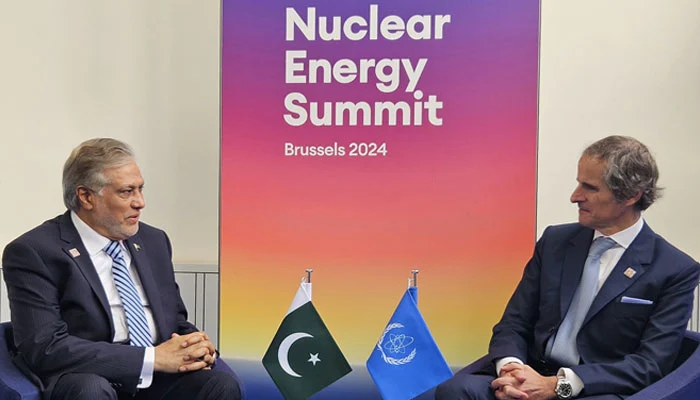During the inaugural Nuclear Energy Summit in Brussels, Pakistan has advocated for increased global collaboration to safeguard its energy security.
Foreign Minister Ishaq Dar stated that his nation is prepared to go green and is eager to diversify its energy sources in his speech at the moot and meeting with the director general of the International Atomic Energy Agency (IAEA).
After all, diversifying sources and supply is crucial to reaching the aim of energy security. A nation that has recently experienced unheard-of climate disasters must simultaneously lower vulnerability elements.
Pakistan’s main energy requirements
The country’s principal energy requirement has actually been largely composed of “POL products, natural gas, coal, electricity, and liquified petroleum gas (LPG)” for a considerable amount of time.
According to a government study, “The primary energy demand is projected to reach 66.49 Mtoe in 2025 and 76.27 Mtoe by 2030, not including fossil fuel requirements for power generation and feedstock.”
However, it is anticipated that Pakistan’s total primary energy needs will be “87.9 Mtoe in 2025 and 99.2 Mtoe” correspondingly.
Numerous elements, such as “expected growth, crude oil projections, population, and urbanization” in Pakistan, are the basis for this statistics.
According to the report, “The energy mix would consist of natural gas including LNG (34%), oil (28%), coal (23%), electricity (13%) and LPG (2%).”







